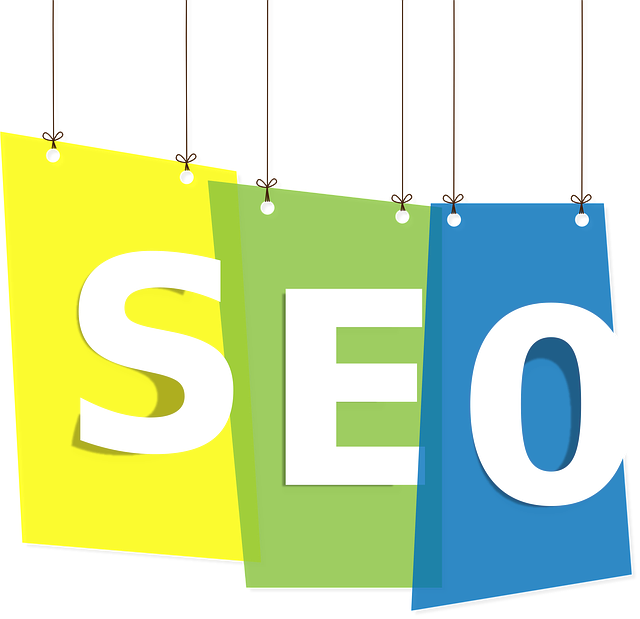Internal linking, enhanced by an optimize anchor text tool, is a powerful SEO strategy for content-rich websites. This tool aids in selecting descriptive, contextually relevant anchor text, signaling search engines about page relevance and improving crawl efficiency. Best practices include using keyword-rich phrases, maintaining natural link flow, and diversifying anchor text types. By leveraging advanced optimize anchor text tools with semantic analysis and competitor monitoring, websites can create diverse and relevant anchor texts, avoiding penalties for non-natural linking patterns. Strategic optimization involves replacing generic links with descriptive phrases, balancing keyword density and diversity within content contexts, and continuously analyzing link performance based on user experience metrics.
In today’s content-rich digital landscape, effective internal linking is vital for boosting SEO performance. This comprehensive guide delves into the art of optimizing internal links on content-heavy sites. We explore the profound impact of internal linking on search engine visibility and user navigation. Learn how to harness the power of anchor text using advanced tools, master strategic placement, measure success, and continuously refine your approach. By implementing these proven strategies, you’ll revolutionize your site’s SEO, enhancing both user experience and organic reach.
- Understanding Internal Linking and Its Impact on SEO
- The Role of Anchor Text in Internal Links
- Optimizing Anchor Text with Advanced Tools
- Strategies for Effective Internal Link Placement
- Measuring the Success of Your Internal Linking Strategy
- Best Practices for Continuous Improvement and Maintenance
Understanding Internal Linking and Its Impact on SEO

Internal linking is a strategic approach to connecting relevant pages within your website, and it plays a pivotal role in enhancing search engine optimization (SEO) for content-rich sites. By integrating internal links, you create a seamless network that allows users and search engines to navigate through your site effortlessly. This strategy ensures that each page contributes to the overall authority of the site, making it more attractive to search engines like Google. When done effectively, internal linking can significantly impact your site’s visibility and ranking in search results.
The use of an optimize anchor text tool is a valuable asset in crafting these internal links. This tool assists in choosing descriptive and contextually relevant anchor text, which is the text users see linked to a particular page. By optimizing anchor text, you provide clear signals to search engines about the content and relevance of the destination pages, thereby improving crawl efficiency and indexing. Effective anchor text optimization tips include using keyword-rich phrases that accurately represent the target page’s content, ensuring a natural flow of links throughout your site, and diversifying anchor text types to maintain a healthy link profile.
The Role of Anchor Text in Internal Links

Internal links play a pivotal role in guiding users and search engines through a website’s content, especially on content-heavy sites. One of the crucial aspects to consider is the optimize anchor text tool—the words used in the clickable text of a link. Anchor text isn’t just a click cue for users; it significantly influences how search engines interpret and rank your pages.
When optimizing internal links, focus on using descriptive and contextually relevant anchor text. This strategy mirrors natural browsing behavior and signals to search algorithms that your links are valuable and trustworthy. An optimize anchor text tutorial or optimize anchor text tips can guide you in choosing phrases that both accurately represent the linked content and maintain a clean, low-spammy link profile. Effective use of anchor text contributes to better SEO results by enhancing the overall user experience and guiding search engine crawlers to prioritize key pages on your site.
Optimizing Anchor Text with Advanced Tools

In today’s digital era, optimizing anchor text using advanced tools is a game-changer for content-heavy sites aiming to excel in search engine rankings. These tools go beyond basic keyword research by offering sophisticated features like semantic analysis and competitor monitoring. By employing such tools, you can craft anchor texts that are not only relevant but also diverse, thereby enhancing your SEO internal linking strategy. For instance, a comprehensive optimize anchor text tool might suggest alternative phrases based on user search intent, helping to ensure your links remain fresh and effective over time.
An optimize anchor text tutorial reveals that beyond keyword density, the quality of anchor text matters significantly. Tools designed for this purpose can help you stay ahead of algorithm updates by identifying potential issues like over-optimization. By leveraging these advanced features, you can create a balanced anchor text profile that boosts your site’s visibility while avoiding penalties associated with non-natural linking patterns. This approach not only optimizes anchor text SEO but also contributes to a more engaging user experience on your content-rich site.
Strategies for Effective Internal Link Placement

To effectively implement internal linking on content-heavy sites, it’s crucial to strategize around anchor text optimization. An optimize anchor text tool can be a valuable asset in identifying relevant keywords that naturally point back to your pages. The key is to use descriptive and contextually relevant anchor text that doesn’t appear overly manipulated. For instance, instead of generic links like “click here,” aim for phrases that reflect the content of the linked page, such as “learn more about SEO best practices” or “explore our in-depth guide to content optimization.” This not only enhances user experience but also signals search engines about the relevance and value of your internal links.
When optimizing anchor text, consider both keyword density and diversity. While it’s beneficial to include targeted keywords, overdoing it can raise red flags with search engine algorithms. Balance your anchor text with a mix of branded terms, generic references, and long-tail keywords that align with user search queries. Additionally, ensure internal links are placed within the context of relevant content, such as in paragraph text or list items, rather than just stuffing them into headings or random sections. This strategic approach to optimize anchor text optimization will not only boost your site’s SEO but also create a seamless navigation experience for visitors.
Measuring the Success of Your Internal Linking Strategy

Measuring the success of your internal linking strategy is crucial for understanding its impact on user engagement and search engine optimization (SEO). Utilize an optimize anchor text tool to analyze the diversity and relevance of your link anchor texts. This will help you identify if your strategy aligns with best practices, such as using descriptive and varied anchor text that accurately reflects the target page’s content. By comparing your current performance against industry benchmarks, you can pinpoint areas for improvement in your optimize anchor text tips and strategy.
Keep an eye on key metrics like click-through rates (CTRs) from internal links, time spent on page, and bounce rates. A well-optimized anchor text strategy should lead to improved user experience, as visitors find relevant content more easily. Monitor these metrics over time to assess the effectiveness of your optimize anchor text SEO efforts and make data-driven adjustments to continuously enhance your site’s performance.
Best Practices for Continuous Improvement and Maintenance

To ensure continuous improvement and maintenance of SEO internal linking on content-heavy sites, regularly review and update your strategy using an optimize anchor text tool. This software can help identify underperforming links, allowing you to replace vague or generic anchor texts with more relevant and keyword-rich alternatives. By following an optimize anchor text tutorial, you can learn best practices for optimizing anchor text, such as keeping it concise, natural, and focused on the linked page’s content.
Implementing regular audits using optimization tips from tools like the anchor text optimizer helps maintain a dynamic and effective linking structure. This process involves removing dead links, adding new internal links where relevant, and ensuring that your site’s navigation effectively guides users and search engine crawlers through your content. Continuously refining these practices will contribute to better website performance and enhance user experience, ultimately driving improved SEO outcomes.
